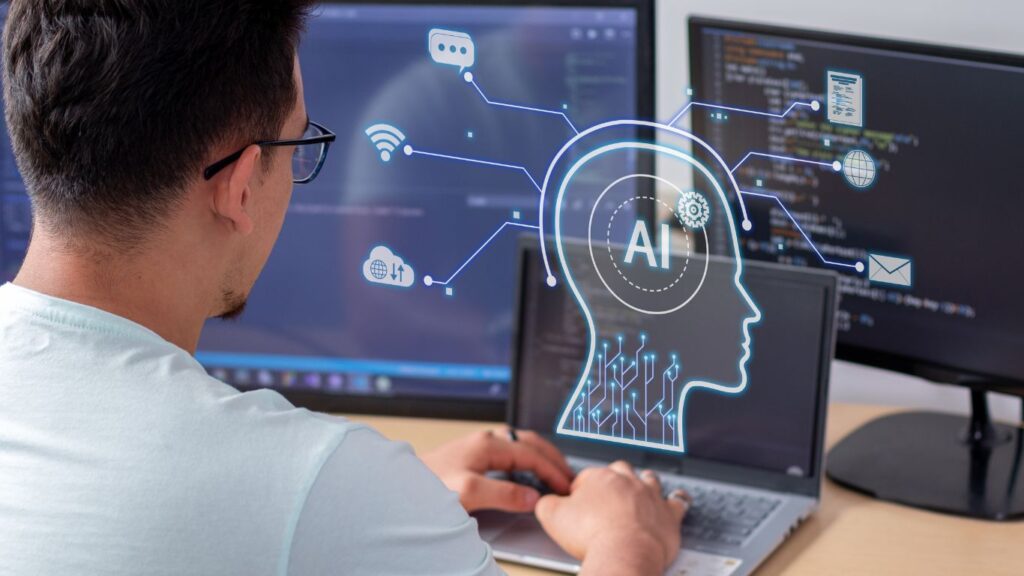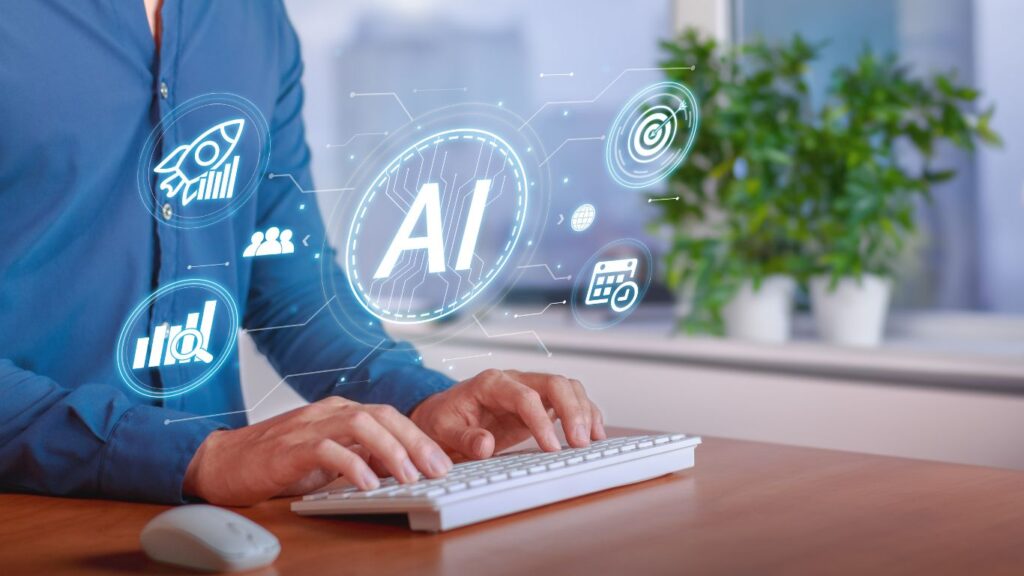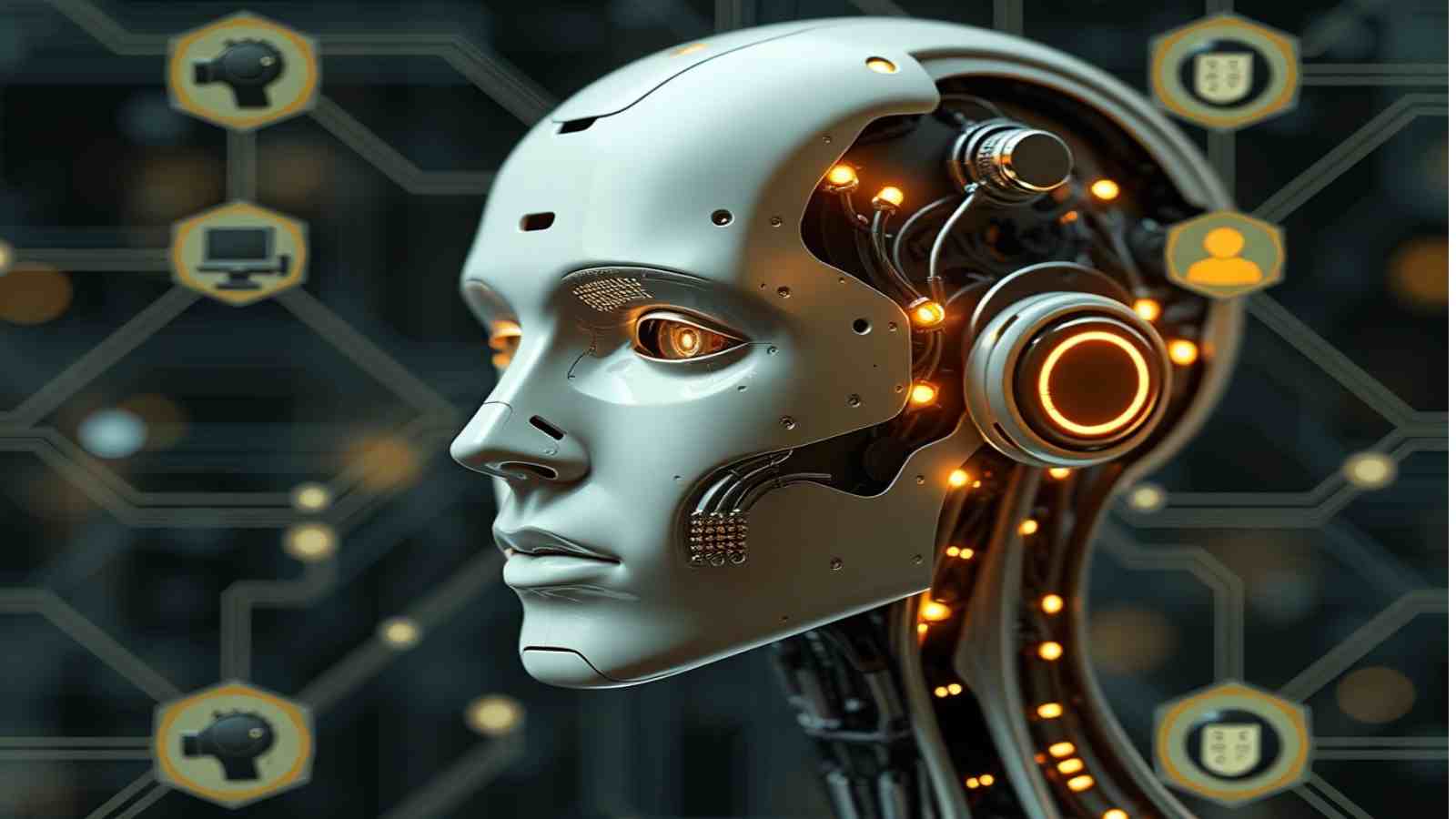Artificial Intelligence (AI) is revolutionizing industries by providing intelligent solutions to complex problems. But how does AI become “intelligent”? The key lies in the training process. Training AI involves teaching an algorithm to recognize patterns and make decisions based on data. This process is critical for applications like customer behavior prediction, fraud detection, and medical diagnosis.
What is AI Training?
AI training is the process of feeding an algorithm with data so it can learn and make accurate predictions or decisions. This involves various steps, from data collection to model deployment, each essential for creating a robust AI model.
Steps Involved in Training AI

- Data Collection:
- Gather labeled and unlabeled datasets.
- Use real-world examples and historical data.
- Ensure data diversity for comprehensive learning.
- Data Preprocessing:
- Clean and normalize the data.
- Handle missing values and outliers.
- Encode categorical variables.
- Model Selection:
- Based on the purpose and nature of the data, choose the appropriate model type (e.g., regression, classification, neural network).
- Model Training:
- Train the model using the preprocessed data.
- Optimize model parameters for better performance.
- Model Evaluation:
- Assess the model using metrics like accuracy, precision, recall, AUC-ROC, log loss, and MSE.
- Test on both training and validation datasets.
- Model Tuning:
- Adjust parameters or explore different models to improve performance.
- Final Model Testing:
- Test with unseen data to gauge generalization and real-world performance.
- Deployment:
- Integrate the model into the AI system.
- Monitor and maintain the model for ongoing performance.
Why is AI Training Crucial?
AI training is vital because it turns raw data into actionable insights. Customer behavior prediction helps businesses personalize recommendations, boosting sales. In fraud detection, it reduces false positives and negatives, saving money. In healthcare, it enhances diagnostic accuracy, leading to better patient outcomes.
Different Approaches to AI Training
Supervised Learning
- It uses labeled data to teach the model.
- Examples include image recognition and spam detection.
Unsupervised Learning
- It uses unlabeled data to find hidden patterns.
- Examples include clustering and anomaly detection.
Reinforcement Learning
- It uses rewards and penalties to train the model.
- Examples include game-playing AI and robotics.
Common Challenges in AI Training
Overfitting
- When a model performs well on training data but poorly on new data.
- Solution: Use techniques like cross-validation and regularization.
Data Quality
- Poor-quality data leads to poor model performance.
- Solution: Invest in data cleaning and preprocessing.
Model Interpretability
- Complex models can be hard to interpret.
- Solution: Use models that balance accuracy and interpretability.
Real-World Applications of Trained AI Models
Retail
- A leading e-commerce company trained an AI model to predict customer behavior, leading to a 20% increase in sales.
Banking
- A major financial institution implemented an AI model for fraud detection, saving over $10 million annually in potential fraudulent transactions.
Healthcare
- A research team developed an AI model for medical image analysis, improving diagnostic accuracy for breast cancer by 15%, leading to earlier detection and better patient outcomes.
Frequently Asked Questions (FAQs)
What is the difference between AI training and machine learning?
AI training is a broad concept that encompasses teaching algorithms to make decisions and predictions. Machine learning is a subset of AI that focuses specifically on the development of algorithms that can learn from and make predictions based on data.

How much data is needed to train an AI model?
The amount of data required depends on the complexity of the task and the type of model being used. Generally, more data leads to more accurate models. However, high-quality and diverse data are crucial for effective learning.
What types of data are used in AI training?
AI models can be trained using various types of data, including text, images, videos, and structured data like spreadsheets. The choice of data type depends on the specific application and the problem being solved.
How long does it take to train an AI model?
Training time varies widely based on factors such as the size of the dataset, the computational power available, and the complexity of the model. Simple models can be trained in minutes or hours, while complex models may take days or weeks.
What is overfitting, and how can it be prevented?
Overfitting occurs when a model performs well on training data but poorly on new, unseen data. Techniques like cross-validation, regularization, and pruning can prevent it by ensuring the model generalizes well.
Why is data preprocessing important?
Data preprocessing is essential because it ensures the data is clean, normalized, and ready for the training process. Proper preprocessing improves model performance and reduces errors, providing more accurate predictions.
Can AI models be retrained with new data?
Yes, AI models can and often should be retrained with new data to improve their accuracy and adaptability. Continuous learning and retraining help the models stay relevant and effective in changing environments.
What are some ethical considerations in AI training?
Ethical considerations include:
- It is ensuring data privacy.
- I am avoiding bias in training datasets.
- They are being transparent about how AI models make decisions.
Addressing these issues is crucial for building trust and ensuring fair AI use.
How is the performance of an AI model evaluated?
Model performance is evaluated using metrics such as accuracy, precision, recall, F1 score, AUC-ROC, and MSE. These metrics help assess how well the model is performing and guide necessary adjustments.
What is the role of human oversight in AI training?
Human oversight is critical in guiding the AI training process, validating outcomes, and ensuring the model behaves as expected. It helps prevent errors, bias, and unintended consequences, ensuring the responsible use of AI.
Conclusion The Future of AI Training
AI training is an evolving field that promises to transform various industries. As data availability and computational power increase, so does AI’s potential. By understanding and overcoming the challenges in AI training, businesses can leverage this technology for unprecedented growth and efficiency.











